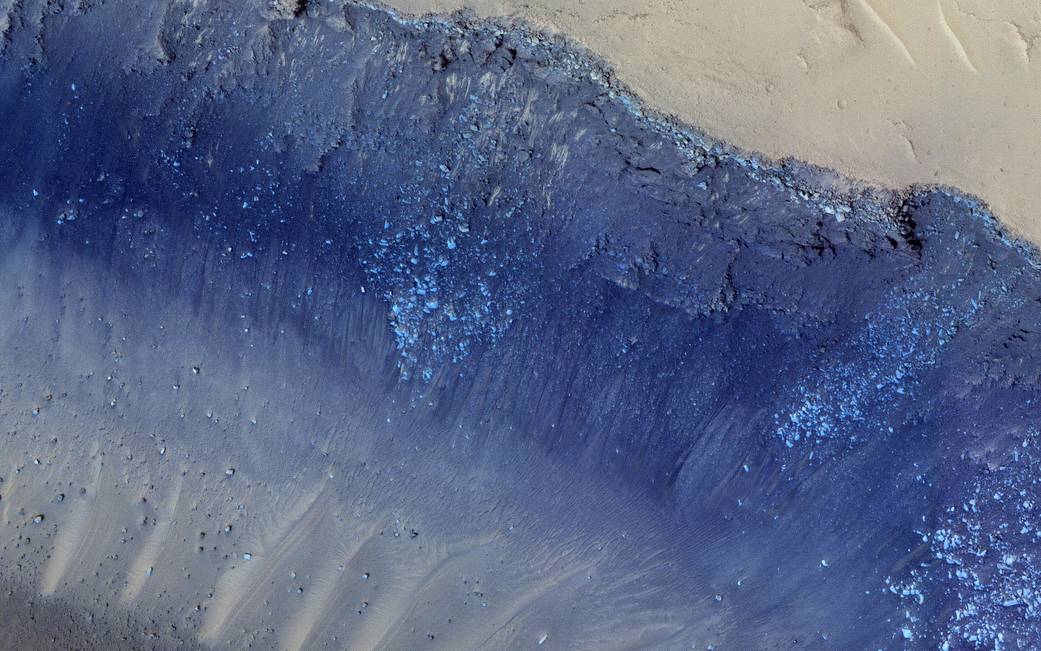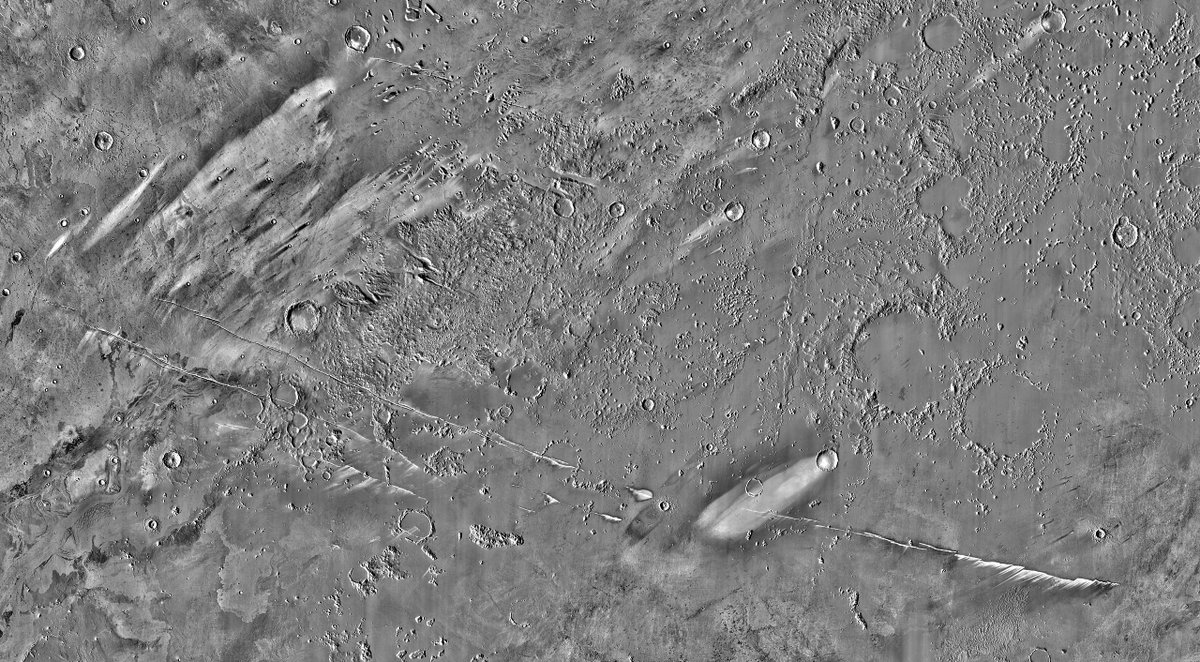Who wants a thread about Cerberus Fossae on Mars? (images: landslides in Cerberus Fossae from @HiRISE NASA/JPL-Caltech/University of Arizona and visualization from HRSC data from Mars Express) (1/11)
Cerberus Fossae is a region of steep-sided fractures on Mars that appear to have geologically young lava flows as well as other outflow features like the Athabasca Valles features in the lower left of this THEMIS image (By NASA / JPL-Caltech / Arizona State University) (2/11)
There& #39;s a lot of work out there about what may cause these outflow channels, but I& #39;m not going to talk about that, because water on Mars is what everyone talks about. (3/11)
I& #39;m more interested in the fact that this is now a confirmed site for quake-causing tectonics (not plate tectonics, though) on another planet! (4/11)
Before @NASAInSight got to Mars in 2018, We knew we would be relatively close to Cerberus Fossae, and we thought we might see quakes there (figure stolen ruthlessly from Taylor et al., 2013 https://agupubs.onlinelibrary.wiley.com/doi/full/10.1002/2013JE004469)">https://agupubs.onlinelibrary.wiley.com/doi/full/... (InSight is filled rectangle CF is unfilled) (5/11)
Why? Because they looked like very steep-sided graben (fault features with down-dropped blocks due to extension) and they showed boulder trails along large stretches that looked like they were caused by shaking very recently (Roberts et al., 2012) (6/11) https://agupubs.onlinelibrary.wiley.com/doi/10.1029/2011JE003816">https://agupubs.onlinelibrary.wiley.com/doi/10.10...
That Taylor et al. paper dated the graben to be younger than 10 million years by crater counts and showed some of the fractures to have more than a kilometer of relative motion, which actually adds up to a whole lot of motion (and thus quakes) over that time. (7/11)
So how does @NASAInSight come in? Well, the two best-located events we have so far appear to be *right there* (figure from the recent Giardini et al., 2020 Nature Geoscience paper https://www.nature.com/articles/s41561-020-0539-8)">https://www.nature.com/articles/... (8/11)
We call those 2 events S0173a and S0235b... the names are just the "sol" (day on Mars) of the observation with a letter separating multiple detections on the same sol. We count sols from our landing in November, 2018. (9/11)
Feel free to ask @exoseismologist about some cool work done by Nienke Brinkman and others at ETH Zürich that may link these even close to the orientations of those beautiful Cerberus Fossae grabens currently in a preprint. (10/11)
So what? This is our first time to be able to link confirmed seismicity with an area that surface geology pointed us to all the way on another freaking planet. That& #39;s a satisfying feeling in a field like planetary science where we so rarely have the data we really want. (11/11)

 Read on Twitter
Read on Twitter






